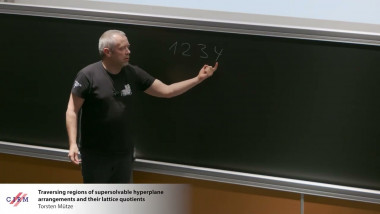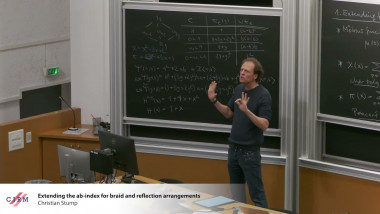
Traversing regions of supersolvable hyperplane arrangements and their lattice quotients
By Torsten Mütze

Extending the ab-index for braid and reflection arrangements
By Christian Stump
Appears in collection : Random Geometry / Géométrie aléatoire
Bijections between planar maps and tree-like structures have been proven to play a crucial role in understanding the geometry of large random planar maps. Perhaps the most popular (and useful) bijections fit into two categories: bijections between maps and labeled trees and bijections between maps and blossoming trees. They were popularized in the late nineties in the important contribution of Schaeffer and they have been widely developed since then. It is natural to ask whether these bijections still hold when the underlying surface is no longer the sphere but any two-dimensional compact manifold? In this case trees are replaced by maps on a given surface with only one face and while the construction of Schaefer of the labeled-type bijection works independently on genus (but crucially depending on the assumption of orientability) his construction of the blossoming-type bijection was known only in the planar case. We will discuss a (recent?) development of these bijections that extends them to all compact two-dimensional manifolds. I will quickly review my previous joint work with Chapuy and its extension due to Bettinelli which treats the labeled-type bijection and will focus on a more recent work joint with Lepoutre which extends the blossoming-type bijection to non-oriented surfaces.
